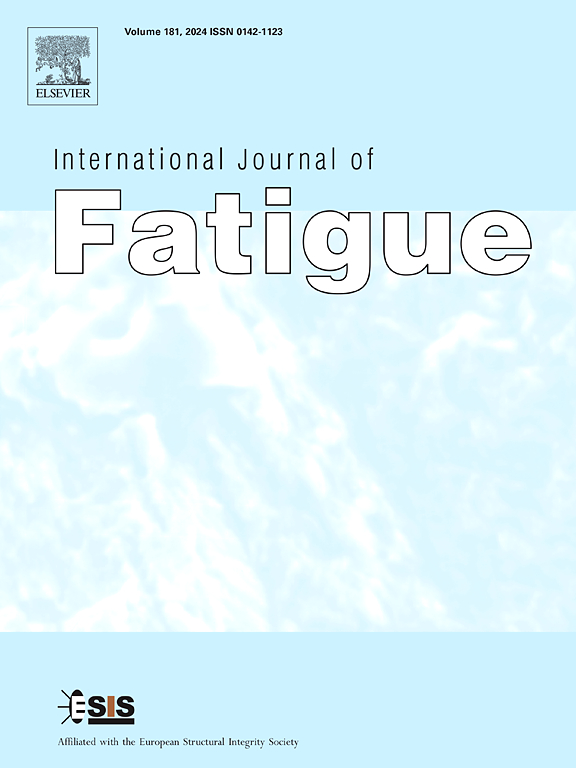一种提高6061铝合金疲劳性能的表面强化新技术
IF 5.7
2区 材料科学
Q1 ENGINEERING, MECHANICAL
引用次数: 0
摘要
为提高6061铝合金的疲劳性能,提出了一种新的表面旋压强化技术。传统的喷丸强化(SP)工艺虽然可以增强试样的表面,但增加了表面损伤,严重阻碍了试样疲劳性能的提高。然而,SR工艺不仅在样品表面引入了高残余压应力和硬化层,而且显著降低了表面粗糙度。SR处理在6061铝合金表层形成了梯度组织,有效延缓了疲劳裂纹的萌生和扩展。疲劳试验表明,经SR处理后,6061铝合金的疲劳强度提高了17.9%,由223 MPa提高到263 MPa。该研究表明,SR工艺在生产高抗疲劳铝合金部件方面具有显著的优势。本文章由计算机程序翻译,如有差异,请以英文原文为准。
A novel surface strengthening technique for enhancing fatigue properties of 6061 Al alloy
A new surface spinning rolling (SR) strengthening technique was developed to enhance the fatigue properties of 6061 Al alloy. The traditional shot peening (SP) process can strengthen the sample’s surface, but it increases surface damage, which seriously hinders the improvement of fatigue performance. However, the SR process not only introduces a high residual compressive stress and a hardened layer on the sample surface but also remarkably lowers the surface roughness. Moreover, the SR treatment formed a gradient microstructure on the surface layer of 6061 Al alloy, effectively postponing the initiation and propagation of fatigue cracks. Fatigue experiments demonstrate that after SR treatment, the fatigue strength of 6061 Al alloy increases by 17.9 %, from 223 MPa to 263 MPa. This study demonstrates the significant advantages by the SR process in producing high fatigue-resistant Al alloy components.
求助全文
通过发布文献求助,成功后即可免费获取论文全文。
去求助
来源期刊

International Journal of Fatigue
工程技术-材料科学:综合
CiteScore
10.70
自引率
21.70%
发文量
619
审稿时长
58 days
期刊介绍:
Typical subjects discussed in International Journal of Fatigue address:
Novel fatigue testing and characterization methods (new kinds of fatigue tests, critical evaluation of existing methods, in situ measurement of fatigue degradation, non-contact field measurements)
Multiaxial fatigue and complex loading effects of materials and structures, exploring state-of-the-art concepts in degradation under cyclic loading
Fatigue in the very high cycle regime, including failure mode transitions from surface to subsurface, effects of surface treatment, processing, and loading conditions
Modeling (including degradation processes and related driving forces, multiscale/multi-resolution methods, computational hierarchical and concurrent methods for coupled component and material responses, novel methods for notch root analysis, fracture mechanics, damage mechanics, crack growth kinetics, life prediction and durability, and prediction of stochastic fatigue behavior reflecting microstructure and service conditions)
Models for early stages of fatigue crack formation and growth that explicitly consider microstructure and relevant materials science aspects
Understanding the influence or manufacturing and processing route on fatigue degradation, and embedding this understanding in more predictive schemes for mitigation and design against fatigue
Prognosis and damage state awareness (including sensors, monitoring, methodology, interactive control, accelerated methods, data interpretation)
Applications of technologies associated with fatigue and their implications for structural integrity and reliability. This includes issues related to design, operation and maintenance, i.e., life cycle engineering
Smart materials and structures that can sense and mitigate fatigue degradation
Fatigue of devices and structures at small scales, including effects of process route and surfaces/interfaces.
 求助内容:
求助内容: 应助结果提醒方式:
应助结果提醒方式:


